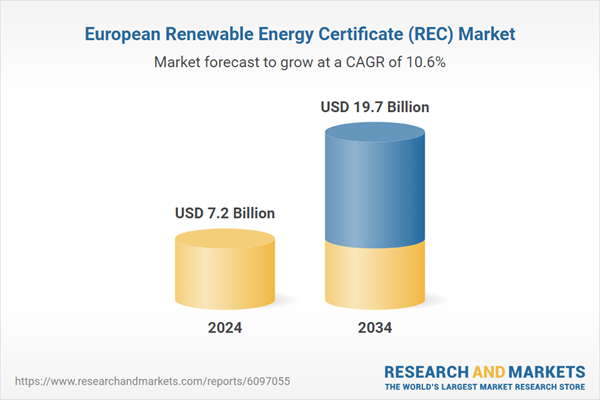Europe’s transition to renewables is also supported by advancements in digital platforms and emerging technologies such as blockchain, which are being integrated into the REC market to enhance transaction accuracy and traceability. These innovations are driving efficiency and improving the overall market structure. Additionally, policy frameworks focused on reducing carbon emissions are further amplifying the demand for certificates. As the market becomes more competitive, stakeholders are not only investing in greener sources but also in mechanisms to track, certify, and trade renewable energy in real time. The increasing adoption of clean energy by utilities and corporations underlines the rising value of these certificates in demonstrating compliance with environmental regulations and sustainability commitments.
The compliance segment is forecasted to grow at a CAGR exceeding 10% through 2034. This growth is largely driven by government-imposed mandates that require energy providers and businesses to purchase RECs to meet renewable energy usage quotas. The legal obligation to reduce carbon emissions ensures consistent demand in this segment. As governments across Europe continue to promote low-carbon economies, the compliance sector is expected to maintain a stable trajectory of growth, bolstered by legislation and incentives aimed at clean energy integration.
Within the source segment of the European REC market, hydropower continues to dominate and accounted for a market share of 42.2% in 2024. It is projected to grow at a CAGR of 9% during the forecast period. Hydropower remains a cornerstone of renewable energy production in regions where water resources are abundant and accessible. However, environmental concerns and fluctuating water availability can limit its scalability. Despite this, it continues to contribute significantly to the overall supply of RECs in Europe due to its established infrastructure and long-standing role in clean energy generation.
Alongside hydropower, wind energy-both onshore and offshore-has gained momentum, supported by advancements in turbine technology and favorable policy environments. These developments are making wind RECs increasingly attractive to investors and utilities. The ongoing expansion of wind energy infrastructure across Europe is expected to drive substantial growth in this category throughout the forecast timeline.
Germany REC market, in particular, has experienced significant progress in recent years. It was valued at USD 1.1 billion in 2022, increased to USD 1.9 billion in 2023, and reached USD 2.1 billion in 2024. The market is expected to grow at a rate exceeding 10% by 2034. Germany’s growth is underpinned by strong national policies that incentivize renewable energy generation, as well as a diversified energy mix that includes solar, wind, and biomass. These supportive frameworks and widespread adoption of clean energy technologies position Germany as one of the leading REC markets in Europe.
In terms of the competitive landscape, six major players collectively held a market share between 30% and 35% in 2024. These companies include EDF Renewables, Statkraft, ENGIE SA, Constellation Energy, Shell plc, and Xpansiv. These firms are actively involved in generating, certifying, and trading renewable energy across European markets. Statkraft stands out as the market leader with the largest share, benefiting from its diverse renewable energy portfolio, which includes hydro, wind, and solar energy. The company’s strong presence in the energy market and its robust operations make it a primary supplier of Guarantees of Origin across Europe.
Comprehensive Market Analysis and Forecast
- Industry trends, key growth drivers, challenges, future opportunities, and regulatory landscape
- Competitive landscape with Porter’s Five Forces and PESTEL analysis
- Market size, segmentation, and regional forecasts
- In-depth company profiles, business strategies, financial insights, and SWOT analysis
This product will be delivered within 2-4 business days.
Table of Contents
Companies Mentioned
The companies featured in this Europe Renewable Energy Certificate (REC) market report include:- 3Degrees
- Ameresco
- Constellation
- Climate Impact Partners
- EDF Trading Limited
- Ecohz
- Enel Green Power
- ENGIE
- Grexel
- Shell
- Statkraft
- STX Group
- Targray
- The Green Certificate Company
- Xpansiv
Table Information
| Report Attribute | Details |
|---|---|
| No. of Pages | 131 |
| Published | May 2025 |
| Forecast Period | 2024 - 2034 |
| Estimated Market Value ( USD | $ 7.2 Billion |
| Forecasted Market Value ( USD | $ 19.7 Billion |
| Compound Annual Growth Rate | 10.6% |
| Regions Covered | Europe |
| No. of Companies Mentioned | 16 |









